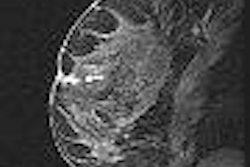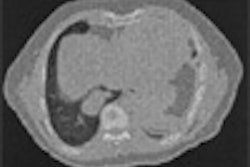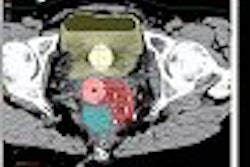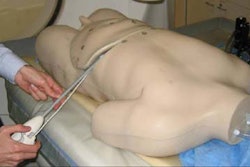A novel imaging technology is a safe and effective navigation tool to target lung areas that are beyond the reach of the standard bronchoscope, according to a study presented at the 2006 American Thoracic Society (ATS) meeting in San Diego.
The study also demonstrated a high diagnostic yield for peripheral lesions and mediastinal lymph nodes using the superDimension/Bronchus system (SDBS), said Dr. Atul Mehta, chairman of the pulmonology division at the Cleveland Clinic Foundation in Ohio. SDBS is manufactured by superDimension of Herzliya, Israel.
The SDBS device enables electromagnetic navigation of the lungs in real-time and on 3D CT. The product is compatible with bronchoscopy and does not require users to significantly change their technique, according to the company.
Mehta reported preliminary results in 57 patients who underwent the SDBS procedure as an adjunct to nonemergency bronchoscopy for various indications. All patients are enrolled in an ongoing open-label study that is examining the feasibility of the system for reaching lung targets.
Results showed that guidance of the device was accurate in 100% of the patients, Mehta said. The average size of the lesions was a mean of 22.89 mm for peripheral lesions and 28.13 mm for lymph nodes.
The diagnostic sensitivity of the procedure was 75.5% for peripheral pulmonary lesions and 94.7% for lymph nodes. Diagnostic sensitivity using standard fiberoptic bronchoscopy under fluoroscopic guidance averages 14% for peripheral lesions and 31% in the inner one-third of the lung. There were no device-related adverse events and no major system failures.
Earlier studies of SDBS in Israel and Germany have shown similar results, Mehta said. A group from the Tel Aviv Sourasky Medical Center found that the system helped obtain positive biopsy specimens in nearly 70% of their 13 cases with an average navigation accuracy of 5.7 mm. In a review by German pulmonary specialists, SDBS was called "a feasible and safe method for obtaining biopsies from peripheral lung lesions" (Chest, April 2006, Vol. 129:4, pp. 988-994; Current Opinion in Pulmonary Medicine, July 2005. Vol. 11:4, pp. 278-281).
Mehta concluded that SDBS was "ready for prime time, provided that lung cancer is your main practice, you work at a tertiary care facility, and your specialty is interventional pulmonology."
By Jill Stein
AuntMinnie.com contributing writer
June 14, 2006
Related Reading
FDA clears 3D CT bronchoscopy, November 15, 2004
superDimension launches CT bronchoscopy device, November 11, 2003
Copyright © 2006 AuntMinnie.com



















